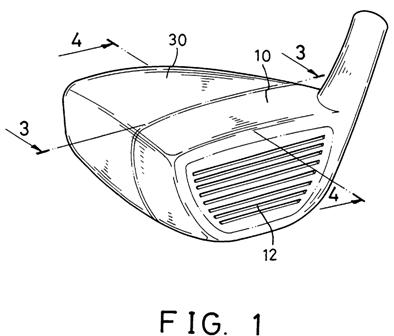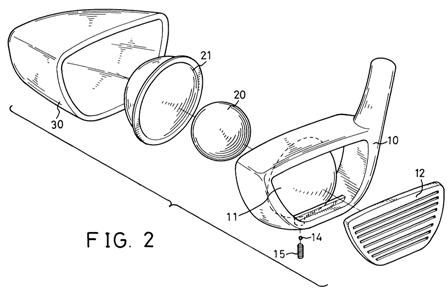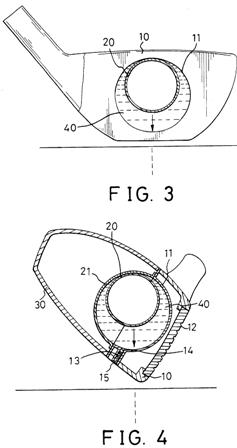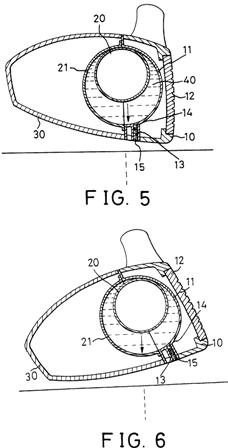Would it Work? A Floating Ball Within a Sphere Within a Club Head
How many yards would you gain with this driver? More appropriately, “would it work?”




The patent goes on to explain:
As shown in FIGS. 1 and 2, a head of a golf club in accordance with the present invention is composed of a hollow body (10) with a first semi-sphere (11) integrally formed therein and a face (12) welded on a front end of the body (10), a float (20) received between the first semi-sphere (11) and a second semi-sphere (21) which is welded to the first semi-sphere (11), and a casing (30) securely welded on a back end of the body (10).
Now referring to FIG. 3, a space between the float (20) and the combined first and second semi-spheres (11, 21) is filled with a liquid (40). As best seen in FIGS. 4 to 6, a filling line (13) is formed between the first semi-sphere (11) and the bottom of the body portion (10). The filling line (13) defines a threaded hole with a narrow neck portion at an end communicating with the space of the combined first and second semi-spheres (11, 21), and an opposite end communicating with the exterior of the club head. The neck portion has a concave outer face. A steel ball (14) has a diameter smaller than the diameter of the threaded hole and greater than the narrow neck portion. After the liquid (40) is poured in the space between the two semi-spheres (11, 21) and the float (20), the steel ball (14) is placed into the filling line (13) and mates with the concave outer face of the neck portion, and then a screw (15) is threadingly engaged with the threaded hole of the filling line (13) to retain the steel ball (14) in position, whereby the threaded hole of the filling line (13) is sealed.
As the specific gravity of the float (20) is far higher than that of the liquid (40), the float (20) always floats at a high level, and the liquid (40) is always low, so that the center of mass of the head of the golf club is lower. As the liquid is fluid, the center of mass of the golf club is changeable and always occurs at the lowest possible point.
The invention has the following advantages: 1. the structure of the head of the golf club of present invention is simple and firm, and the production cost is low; 2. the head of the golf club comprises the float (20) received in the combined two semi-sphere (11, 21) with the liquid (40) occupying the space therebetween; whereby the center of mass of the golf club is self-optimizing; and 3. as the head of the golf club is hollow, it strikes the golf ball with a preferred audible “crack”.
Who doesn’t like a “preferred audible crack?” So, would it work?
Dave Dawsey – The Golf Attorney
PS – Check out more “Would it Work?” posts HERE
